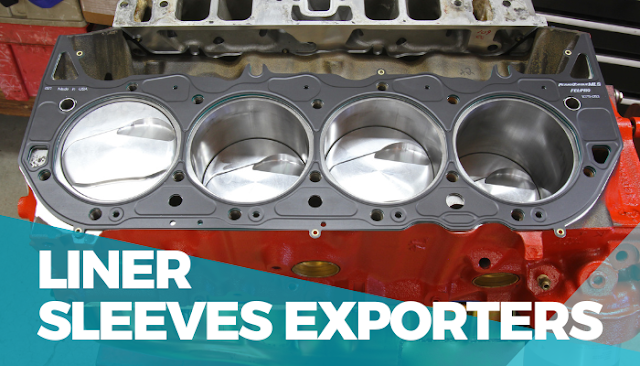What material is the cylinder liner sleeve?
 |
Cylinder liner sleeves are an essential component of internal combustion engines. They are cylindrical metal inserts that are installed in the engine block and provide a smooth and durable surface for the piston to move up and down. The material used for cylinder liner sleeves plays a critical role in the performance and durability of the engine. In this article, we will discuss the different materials used for cylinder liner sleeves, their properties, advantages, and disadvantages.
1. Cast Iron
Cast iron is the most commonly used material for cylinder liner sleeves. It is known for its excellent wear resistance, thermal conductivity, and low coefficient of thermal expansion. Cast Iron Liner Sleeves exporters state that they are generally made of gray iron or ductile iron.
Gray iron is a commonly used material for cylinder liner sleeves due to its excellent wear resistance, high damping capacity, and low cost. It has a microstructure consisting of graphite flakes in a ferrite and pearlite matrix. The graphite flakes act as a solid lubricant, providing good wear resistance and reducing friction between the piston rings and the cylinder liner. Gray iron liner sleeves are also relatively easy to manufacture and can be made with a variety of casting techniques.
Ductile iron is a more modern variant of cast iron that has superior strength, ductility, and toughness compared to gray iron. It has a microstructure consisting of graphite nodules in a ferrite and pearlite matrix. Ductile iron liner sleeves are more expensive than gray iron liners but provide better performance and durability. They are commonly used in high-performance engines that operate under extreme conditions.
2. Steel
Steel is another material used for cylinder liner sleeves. It is known for its excellent strength, hardness, and wear resistance. Steel liner sleeves are typically made from low-alloy steels, such as 8620 or 9310, or high-alloy steels, such as 52100 or M50.
Low-alloy steels are commonly used for cylinder liner sleeves due to their good balance of strength, toughness, and affordability. They are typically heat-treated to increase their hardness and wear resistance. Low-alloy steel liner sleeves are commonly used in high-performance engines that operate under extreme conditions, such as racing engines.
High-alloy steels are used in the most demanding engine applications, such as aircraft engines and military vehicles. They have superior strength, hardness, and wear resistance compared to low-alloy steels but are also more expensive. High-alloy steel liner sleeves are typically made from bearing-grade steels, which are designed to withstand high loads and high temperatures.
3. Aluminum
Aluminum is a lightweight and corrosion-resistant material that is commonly used for cylinder blocks in modern engines. Aluminum liner sleeves are typically used in engines that operate at lower temperatures and lower loads, such as small gasoline engines and some diesel engines. They are typically made from a high-silicon aluminum alloy, which provides good wear resistance and low friction.
Aluminum liner sleeves have the advantage of being lightweight, which can improve the overall efficiency and fuel economy of the engine. However, they are not as durable as cast iron or steel liners and can be more prone to cracking and wear. They are also more expensive to manufacture than cast iron or steel liners.
4. Ceramic
Ceramic is a relatively new material used for cylinder liner sleeves. It is known for its excellent wear resistance, thermal conductivity, and low coefficient of thermal expansion. Ceramic liner sleeves are typically made from silicon nitride or aluminum oxide.
Silicon nitride is a high-strength ceramic material that has excellent wear resistance and low friction. It is commonly used in high-performance racing engines that operate at very high temperatures and loads. Silicon nitride liner sleeves are also relatively lightweight and can improve the overall performance of the engine.
Aluminum oxide is another ceramic material that is commonly used for cylinder liner sleeves. It
Conclusion
In conclusion, cylinder liner sleeves are essential components of internal combustion engines, used to protect the cylinder bore from wear and tear. The material used to make these sleeves is critical in determining their durability and efficiency. Cast iron is the most common material used in making cylinder liner sleeves, thanks to its high strength, wear resistance, and good heat dissipation properties. However, new materials like aluminum and steel have been introduced in the market, which offer improved wear resistance and thermal conductivity. Ultimately, the choice of the material used in making the cylinder liner sleeve will depend on the specific application, as well as the requirements of the engine. Regardless of the material chosen, proper maintenance of the cylinder liner sleeve is critical in ensuring the longevity and optimal performance of the engine. This includes regular inspection for signs of wear, proper lubrication, and replacement of worn-out parts. With proper care, the cylinder liner sleeve can serve an engine for a long time, reducing maintenance costs and increasing efficiency.



Comments
Post a Comment